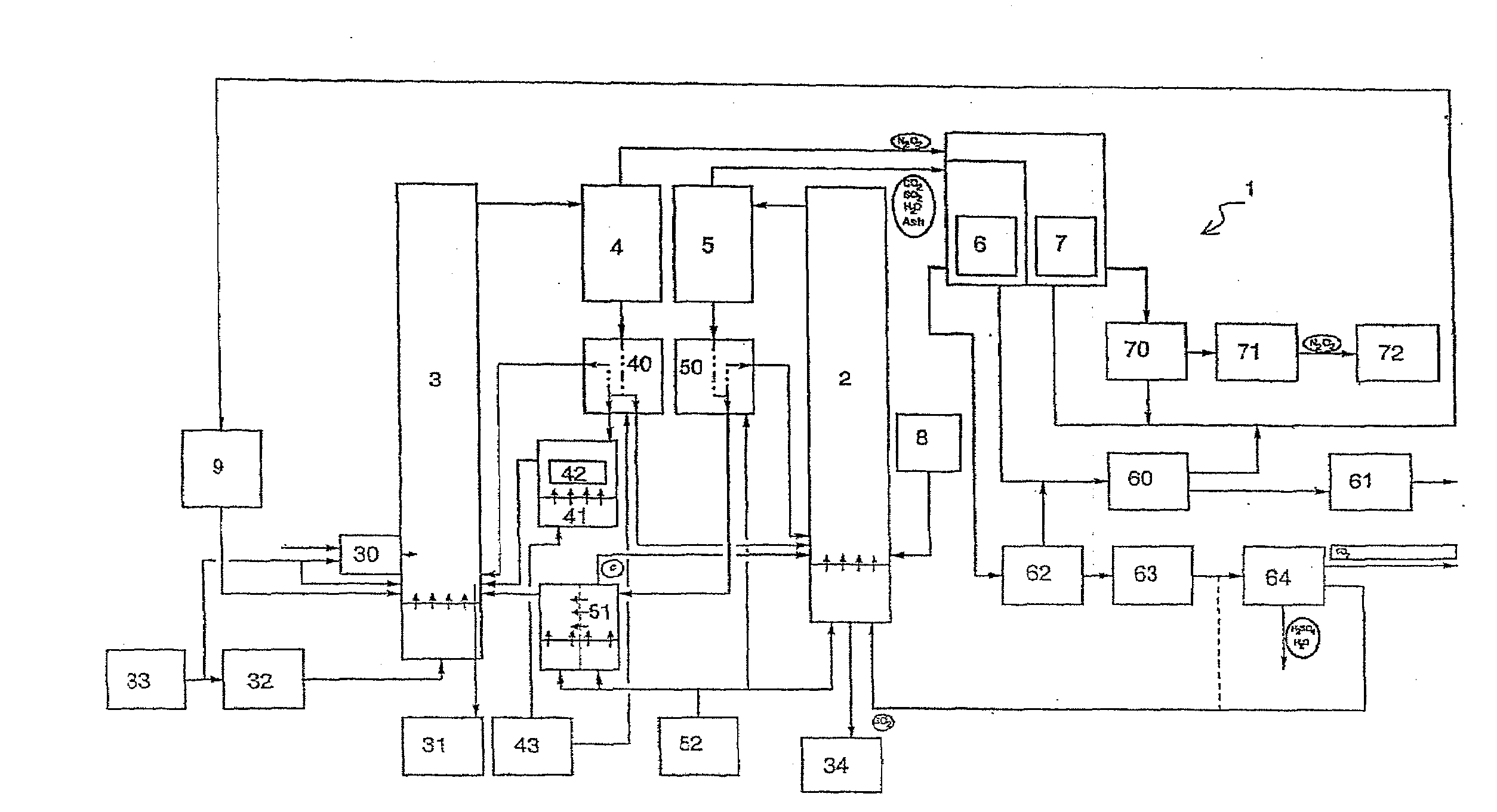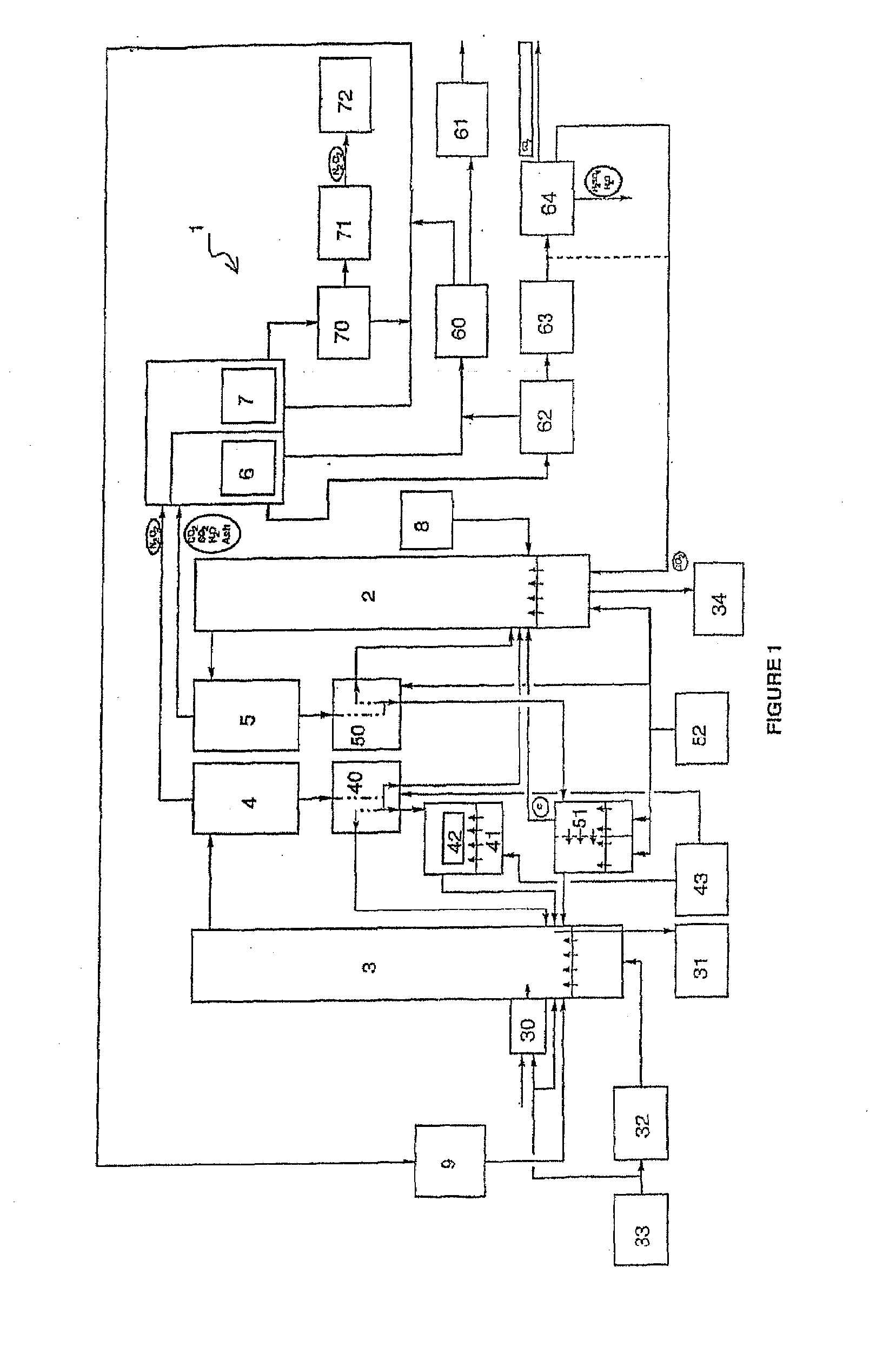Combustion installation with co2 recovery
a technology of co2 recovery and combustion installation, which is applied in the direction of combustion types, lighting and heating apparatuses, capillary burners, etc., can solve the problems of gaseous cosub>2, thermal regeneration, and penalize the energy efficiency of the electricity and/or steam production installation, and achieve the effect of reducing the cost of co2 captur
- Summary
- Abstract
- Description
- Claims
- Application Information
AI Technical Summary
Benefits of technology
Problems solved by technology
Method used
Image
Examples
Embodiment Construction
[0027]The installation 1 includes an oxide reduction reactor 2, an oxide oxidation reactor 3, two cyclones 4 and 5, each dedicated to one reactor, and two rear cages 6 and 7 containing recovery exchangers 66 for the flue gases and 73 for the air, each dedicated to one of the reactors.
[0028]The reduction reactor 2 is fed with fuel from a pulverized coal silo 8. The coal is coarsely ground beforehand.
[0029]The reactor 2 is fluidized by a mixture of steam and recycled CO2. When the installation is started up, the bed is fluidized only by steam.
[0030]After reduction in the reactor 2, the oxides enter the cyclone 5 in which the solid oxide particles are separated from the fly ash and the combustion gases, consisting of CO2, SO2 and steam.
[0031]The fly ash and the combustion gases then enter the heat exchangers 6. The fly ash is separated from the combustion gases in a bag filter 62. The mixture of CO2, H2O and SO2 is then fed into the cooling and condensing circuit 64 via an induced draf...
PUM
| Property | Measurement | Unit |
|---|---|---|
| pressure | aaaaa | aaaaa |
| temperature | aaaaa | aaaaa |
| density | aaaaa | aaaaa |
Abstract
Description
Claims
Application Information
 Login to View More
Login to View More - R&D
- Intellectual Property
- Life Sciences
- Materials
- Tech Scout
- Unparalleled Data Quality
- Higher Quality Content
- 60% Fewer Hallucinations
Browse by: Latest US Patents, China's latest patents, Technical Efficacy Thesaurus, Application Domain, Technology Topic, Popular Technical Reports.
© 2025 PatSnap. All rights reserved.Legal|Privacy policy|Modern Slavery Act Transparency Statement|Sitemap|About US| Contact US: help@patsnap.com



